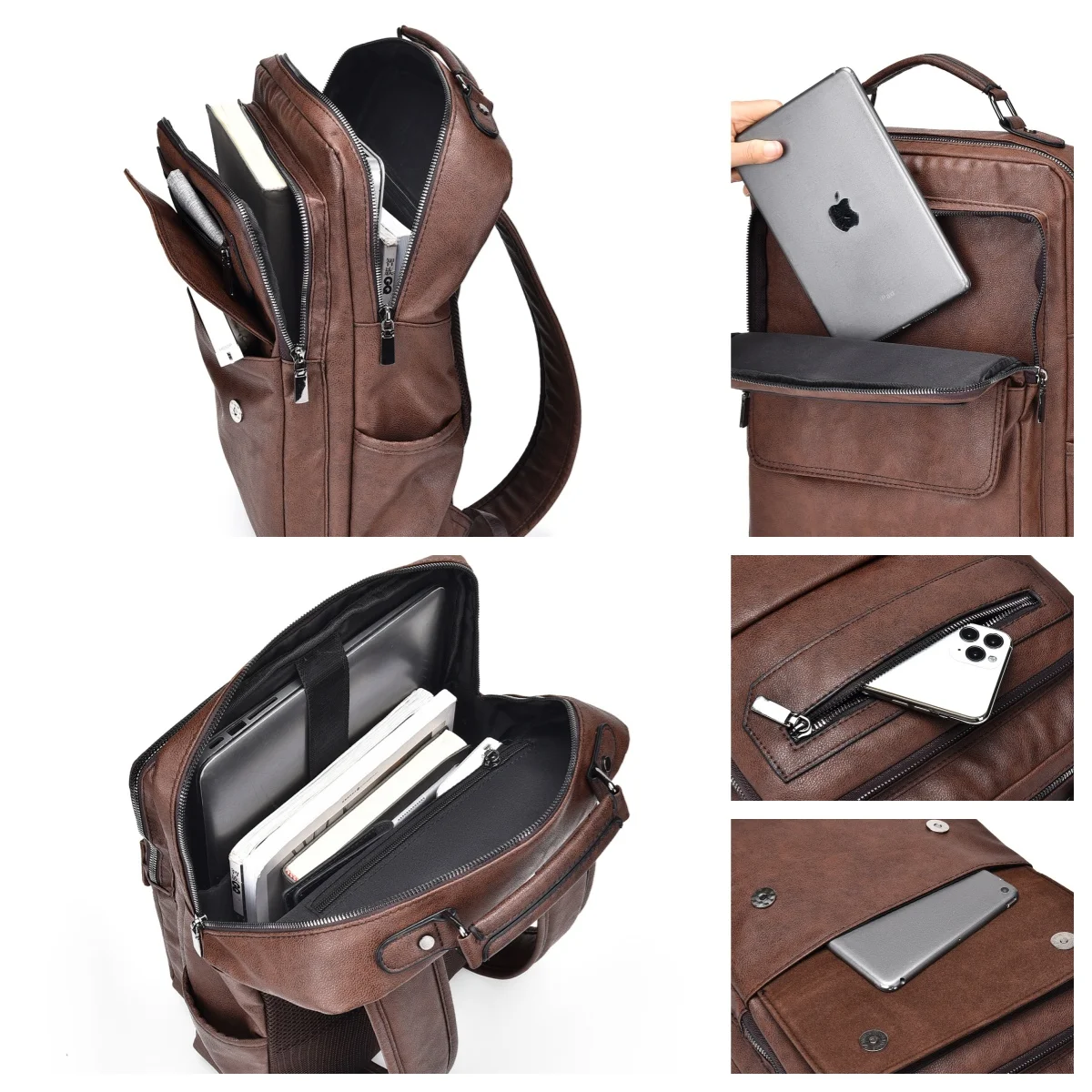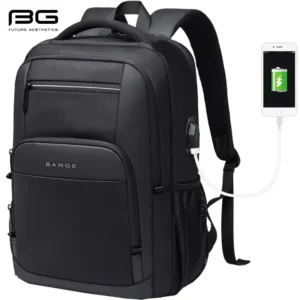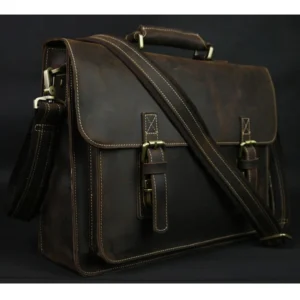Introduction: Your Adventure, Unburdened
The difference between an enjoyable hiking experience and a painful ordeal often comes down to one crucial factor: how well your backpack fits. A properly fitted backpack distributes weight efficiently, prevents unnecessary strain, and allows you to focus on the beauty around you rather than the discomfort on your back.
When your pack fits correctly, you’ll experience:
- Significantly reduced shoulder and back pain
- Less fatigue even on longer treks
- Better balance on uneven terrain
- Optimal weight distribution (with 70-80% of the load resting on your hips, not your shoulders)
The measurement and fitting process isn’t just helpful—it’s essential. Many hikers mistakenly endure discomfort thinking it’s normal, when in reality, a systematic approach to backpack fitting can transform their experience. Regular leather conditioning and waterproofing maintains your pack’s performance, while proper wearing techniques further enhance comfort.
In this guide, we’ll walk through the precise steps to measure your body and adjust your backpack for that perfect, custom fit.
Why Proper Backpack Fit Is Non-Negotiable
Understanding the importance of backpack fit goes beyond basic comfort—it’s about biomechanics and energy conservation. Here’s why getting this right matters so much:
Optimal Weight Distribution: A properly fitted backpack transfers 70-80% of the weight to your hips and lower body, where your strongest muscles can handle the load. This dramatically reduces fatigue and allows you to hike longer with less effort.
Reduced Fatigue & Pain: When weight sits incorrectly, specific pressure points develop—shoulder blade soreness, hip bruising, neck strain, and lower back pain. Proper fitting eliminates these common complaints by spreading the load appropriately.
Improved Balance & Stability: A well-fitted pack sits close to your center of gravity, making you more stable on varied terrain. This reduces the risk of falls and makes challenging sections of trail significantly easier to navigate.
Enhanced Performance: When you’re not constantly adjusting an uncomfortable pack or dealing with pain, you can hike further, enjoy the scenery more, and have energy left for camp activities.
Many hikers falsely assume that backpack size correlates directly with clothing size or height. In reality, torso length—not overall height—is the critical measurement. Two people of identical height might need completely different backpack sizes based on their torso proportions. Our leather travel backpacks are designed with adjustability in mind, but proper measurement is still essential.
Essential Tools for Measuring and Fitting
Before starting the measurement process, gather these basic items:
- Flexible measuring tape – A soft fabric tape measure works best, but a piece of string that you can measure later will work in a pinch
- A friend or helper – While self-measurement is possible, having assistance ensures more accurate results
- Your backpack – Ideally the one you’ll be using regularly
- Simulated gear weight – 10-20 pounds (4.5-9 kg) of items to load your pack:
- Day hikes: 10-15 pounds (4.5-6.8 kg)
- Overnight trips: 15-20 pounds (6.8-9 kg)
- Extended journeys: 20+ pounds (9+ kg)
Having the right tools ensures accuracy in your measurements, which directly impacts how well your leather backpack will serve you on your adventures.
Step 1: Precisely Measuring Your Torso Length
Torso length is the single most important measurement for determining your backpack size. This measurement runs from the prominent vertebra at the base of your neck to the iliac crest (top of your hip bones).
Here’s how to measure accurately:
Locate your C7 vertebra – Tilt your head forward and feel along the base of your neck for the bony bump that protrudes the most. This is your C7 vertebra and marks the top point of your measurement.
Find your iliac crest – Place your hands on your hips with thumbs pointing toward your spine. The line between your thumbs across your back marks the bottom of your torso measurement.
Measure the distance – With a helper, measure from the C7 vertebra down your spine to the imaginary line between your thumbs. Keep the measuring tape flush against your spine for accuracy.
For self-measurement: Stand with your back against a wall, mark the locations with tape, and measure between the marks after stepping away.
Common mistakes to avoid:
– Measuring over clothing (can add inaccuracy)
– Allowing the tape to sag away from the spine
– Measuring to the waistline instead of the iliac crest
Understanding your measurement:
– XS: Under 16 inches (41 cm)
– S: 16-18 inches (41-46 cm)
– M: 18-20 inches (46-51 cm)
– L: 20+ inches (51+ cm)
This foundational measurement determines which backpack frame size will work best for you. After ensuring your backpack fits properly, regular conditioning of your leather backpack will help maintain its comfort and durability.
Step 2: Accurately Measuring Your Hip Circumference
Your hip measurement is critical for selecting the right hipbelt size, which plays a major role in carrying comfort since it will bear most of your pack’s weight.
Measurement steps:
Find your iliac crest (the top ridge of your hip bones) – this should be the same landmark used in your torso measurement.
Wrap the measuring tape around your body at this level, crossing the tape directly over the iliac crest. This typically sits higher than where you might wear pants.
Ensure the tape is level all the way around and has proper tension – snug but not digging into skin.
Note the measurement in inches or centimeters.
Important note: This measurement often differs from clothing waist size. Many hikers are surprised to discover their hipbelt size doesn’t match their pant size. The iliac crest typically sits higher than where pants rest, and the measurement serves a different purpose.
Typical hipbelt sizing:
– Small: 26-30 inches (66-76 cm)
– Medium: 30-34 inches (76-86 cm)
– Large: 34-38 inches (86-97 cm)
– XL: 38+ inches (97+ cm)
With these measurements, you’ll be better equipped to find the perfect fit from our men’s leather backpack collection.
Understanding Backpack Sizing Charts & Adjustable Systems
Backpack sizing varies significantly between manufacturers, which can make shopping confusing. Here’s how to navigate this challenge:
Size terminology variations:
Some brands use numeric sizing (S, M, L, XL), while others use actual inch or centimeter ranges. Some may even use descriptive terms like “regular” or “long.”
Sample Sizing Chart Reference:
| Torso Length | Common Size Label | Typical Frame Height |
|---|---|---|
| <16” (<41cm) | Extra Small (XS) | 14-16” (35-41cm) |
| 16-18” (41-46cm) | Small (S) | 16-18” (41-46cm) |
| 18-20” (46-51cm) | Medium (M) | 18-20” (46-51cm) |
| 20-22” (51-56cm) | Large (L) | 20-22” (51-56cm) |
| >22” (>56cm) | Extra Large (XL) | 22”+ (56cm+) |
Between sizes? If your measurements fall between standard sizes, consider:
– Sizing down if you prefer a snugger fit
– Sizing up if you typically carry bulkier clothing
– Prioritizing an adjustable system
Adjustable torso systems provide flexibility and fine-tuning:
- Slider systems – Allow the shoulder harness to move up and down along a track
- Velcro adjustment panels – Enable repositioning of the shoulder harness
- Benefits – Accommodate changing clothing layers and allow sharing between similar-sized hikers
- Limitations – May add weight and sometimes lack the perfect fit of a fixed system
Understanding these variations helps you interpret sizing charts and make informed decisions when shopping.
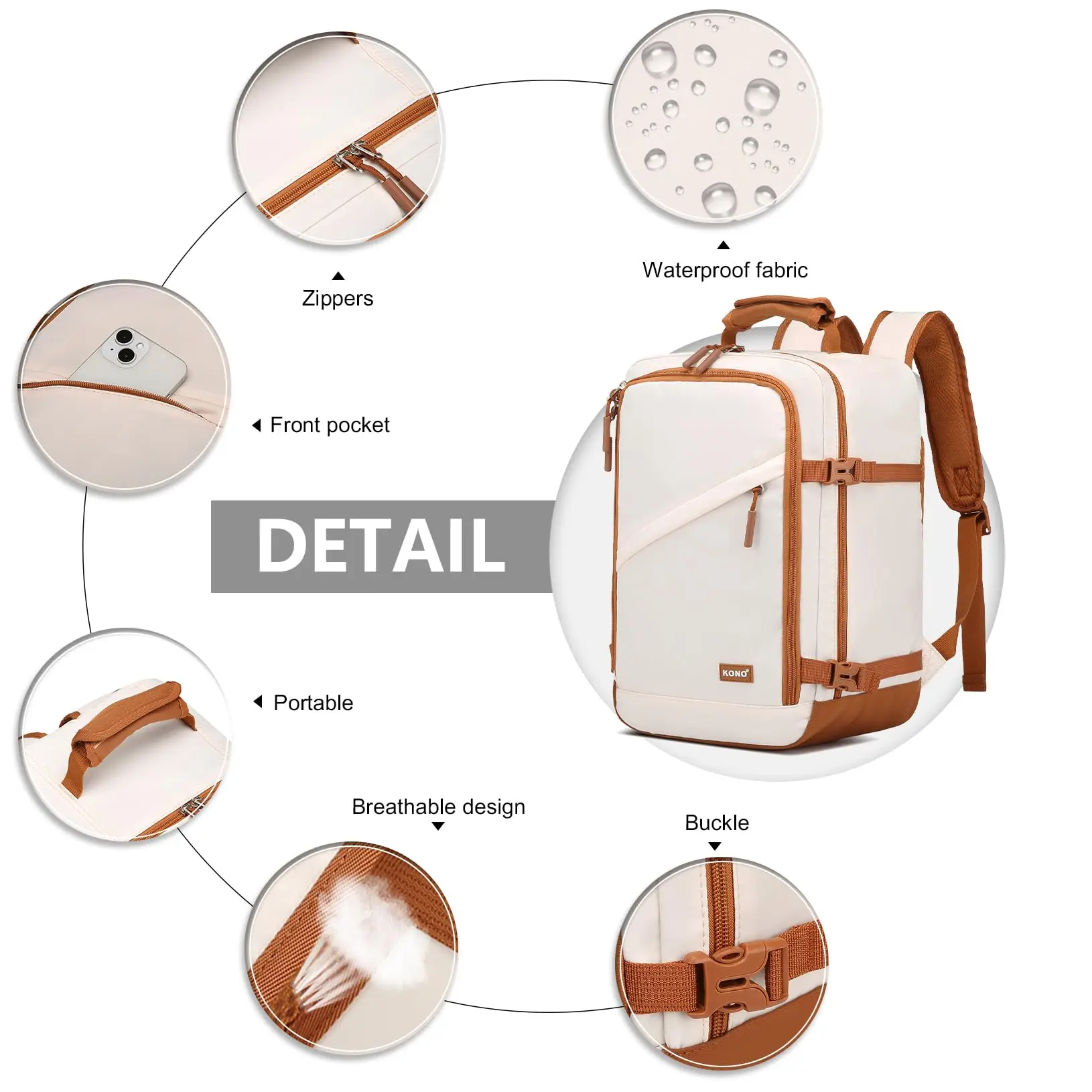
Step 3: Fitting Your Backpack – Initial Preparation
Before diving into specific adjustments, proper preparation ensures an accurate fit:
- Simulate realistic conditions – Empty backpacks behave differently than loaded ones, so add weight before fitting
- Load your pack properly – Add 10-20 pounds (4.5-9 kg) distributed as you would during a real hike
- Place heavier items close to your back and centered between shoulder blades
- Medium-weight items toward the middle
Lighter items toward the outside and bottom
Start with all straps loosened – Begin with the hipbelt, shoulder straps, load lifters, and stabilizer straps completely loose
Adopt proper stance – Stand straight with feet shoulder-width apart and arms at sides
Wear similar clothing – Dress in the type of clothing you’ll typically wear while hiking
This preparation creates realistic conditions for fitting and ensures that the adjustments you make will translate to actual trail comfort. Proper packing techniques complement a well-fitted backpack by maintaining balance and weight distribution.
Step 3A: Adjusting the Hipbelt
The hipbelt is your foundation for comfort, designed to carry 70-80% of your pack’s weight. Here’s how to get it right:
Position the belt correctly – Center the padded portion directly over your iliac crest (hip bones), not above or below
Buckle and tighten evenly – Pull both sides simultaneously toward the front for even pressure
Check the fit using three tests:
– You should feel most of the pack weight transferred to your hips
– You should be able to slip two fingers (no more, no less) between the belt and your body
– You should maintain full range of hip movement while walkingSpecial considerations:
– Curved or athletic builds may need to position the belt slightly lower
– The belt should wrap around your hips without gaps at the sides
Common problems:
– If the belt rides up when tightened, it’s too small
– If you can’t tighten it enough to stay in place, it’s too large
– If it digs in uncomfortably despite proper positioning, it may be too stiff for your body type
A properly fitted hipbelt creates the foundation for all other adjustments. Our women’s leather backpack collection includes designs with hipbelts specifically contoured for female anatomy.
Step 3B: Adjusting the Shoulder Straps
With the hipbelt properly positioned and tightened, the shoulder straps can now be adjusted to stabilize the pack rather than bear its weight:
Find the anchor point position – The straps should attach to the pack 1-2 inches (2.5-5 cm) below the top of your shoulders
Tighten properly – Pull the straps downward and slightly backward until snug but not tight
Eliminate gaps – The straps should follow the contour of your shoulders without significant gaps, but shouldn’t bear much weight
Check for proper fit:
– No pinching or digging at the front of shoulders
– No upward pull that lifts the hipbelt
– Straps should contact your shoulders along their full width
– Strap edges shouldn’t dig into your armpits or neck
Signs of incorrect fit:
– Pain at the collarbone or shoulders indicates too much weight on shoulder straps
– Large gaps between straps and shoulders suggest the pack may be too large
– Straps cutting into armpits mean they’re too close together for your frame
Proper shoulder strap adjustment complements your hipbelt fit by keeping the pack stable and close to your body. After your adventure, following a leather maintenance guide for commuters will help preserve your backpack’s fit and function.
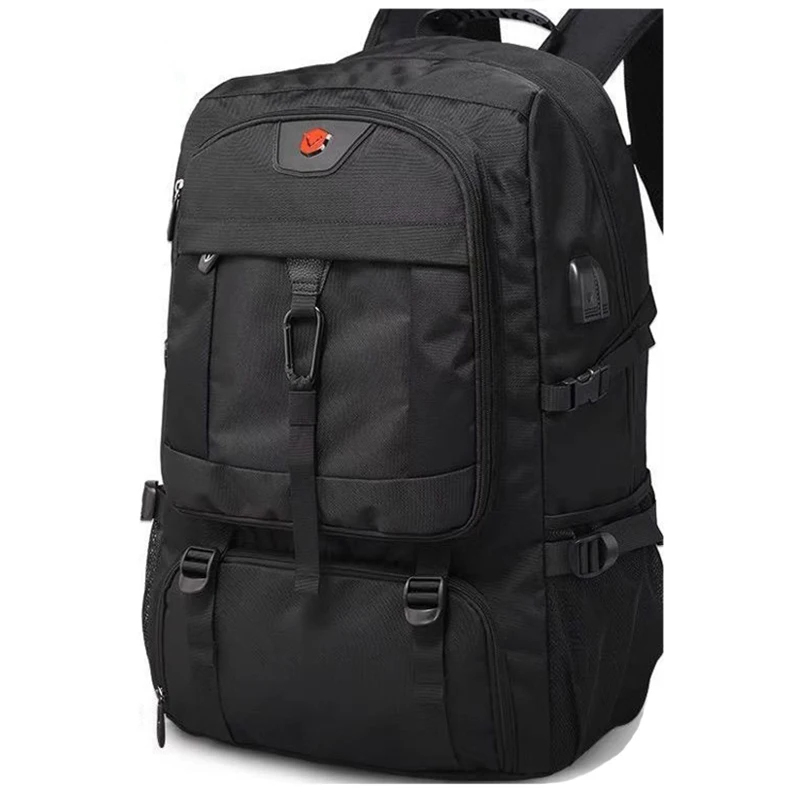
Step 3C: Adjusting the Load Lifters
Load lifter straps are small but mighty components that fine-tune how your pack sits against your back:
Locate the straps – These small straps connect the top of the shoulder straps to the top of the pack frame
Set the angle – Ideally, load lifters should form approximately a 45-degree angle between the top of your shoulder straps and the pack
Adjust tension – Pull the straps until the top of the pack moves slightly closer to your body, but doesn’t pull the hipbelt upward
Test the effect – You should feel the pack’s weight shift slightly closer to your back, improving balance
Common mistakes:
– Overtightening – Pulls the hipbelt up from its proper position and creates pressure points
– Under-tightening – Allows the pack to pull away from your back, creating imbalance and strain
If you can’t achieve the ideal 45-degree angle, your pack may be the wrong torso length. This adjustment is especially important for large leather backpacks where proper weight distribution significantly impacts comfort.
Step 3D: Adjusting the Sternum Strap
The sternum strap stabilizes your shoulder straps, preventing them from sliding outward:
Position correctly – Place the strap across your chest approximately 1-2 inches (2.5-5 cm) below your collarbones
Adjust tension – Tighten just enough to keep shoulder straps from sliding outward, not so tight that it restricts breathing or comfort
Test breathability – Take several deep breaths to ensure the strap doesn’t restrict chest expansion
Consider your body – Women may need to position the strap higher, while those with larger chests might find a lower position more comfortable
The sternum strap should provide stability without constriction. Its purpose is to prevent shoulder straps from spreading apart, not to transfer weight. Our leather laptop backpacks feature ergonomic sternum straps that provide stability while protecting your valuable electronics.
Common Fitting Mistakes & Troubleshooting
Even with careful measurement, you might encounter these common issues:
Shoulder pain
– Cause: Too much weight on shoulders instead of hips
– Solution: Loosen shoulder straps slightly, reposition and retighten hipbelt
Hip discomfort
– Cause: Hipbelt too high, too low, or too tight
– Solution: Reposition directly over iliac crest; ensure proper padding contact
Pack swaying or bouncing
– Cause: Load lifters too loose or hipbelt not secure
– Solution: Tighten load lifters to bring pack closer to body; ensure hipbelt is centered and tight
Upper back/neck strain
– Cause: Pack riding too low or load lifters too tight
– Solution: Raise pack position by tightening shoulder straps; adjust load lifters to 45° angle
Hot spots or chafing
– Cause: Friction from movement or improper strap positioning
– Solution: Adjust problem areas; consider strategic padding or different clothing
When to reconsider your pack:
If adjustments don’t resolve issues, your pack may be the wrong size or style for your body. Consider sizing up or down, or exploring packs with different harness designs. Maintaining your leather backpack properly will ensure it continues to provide optimal comfort.
Tips for On-Trail Adjustments
Fitting doesn’t end when you hit the trail—it’s an ongoing process that responds to changing conditions:
Regular micro-adjustments – Slightly loosen and retighten straps every few hours to relieve pressure points and improve circulation
Terrain-specific adjustments:
- Steep ascents: Loosen shoulder straps slightly to improve forward lean posture
- Descents: Tighten shoulder straps and load lifters to prevent pack from pulling backward
Side-hilling: Adjust side stabilizer straps to prevent pack shifting
Use compression straps to secure and stabilize loads as food and water are consumed
Temperature adaptations – Loosen slightly when adding layers in cold weather; readjust when removing layers
These small adjustments throughout your hike can significantly improve comfort and prevent pain from developing.
14 Inch Leather Laptop Backpack, Brown Leather Backpack, Men's Leather Backpack, Vintage Leather Backpack
Price range: $177.28 through $199.12 Select options This product has multiple variants. The options may be chosen on the product pageCarry On Leather Backpack, Roll Top Leather Backpack
Price range: $77.76 through $96.48 Select options This product has multiple variants. The options may be chosen on the product pageDesigner Men's Backpack, Men's Leather Laptop Backpack, Men's Leather Work Backpack
Price range: $158.04 through $160.04 Select options This product has multiple variants. The options may be chosen on the product pageDesigner Mini Backpack, Mini Leather Backpack, Small Leather Sling Backpack, Women's Leather Backpack
Price range: $95.76 through $98.80 Select options This product has multiple variants. The options may be chosen on the product pageDesigner Mini Backpack, Designer Women's Backpack, Mini Leather Backpack, Women's Leather Backpack
Price range: $135.92 through $137.64 Select options This product has multiple variants. The options may be chosen on the product page15 Inch Leather Laptop Backpack, Leather Briefcase Backpack
$332.96 Select options This product has multiple variants. The options may be chosen on the product page

When to Seek Professional Help
While DIY fitting works for most people, certain situations call for expert assistance:
- Persistent pain despite multiple adjustment attempts
- Special physical considerations:
- Significant scoliosis or spinal conditions
- Recent back, hip, or shoulder injuries
- Unusually short or long torso proportions
Physical limitations affecting standard carrying positions
Activity-specific requirements for climbing, photography, or trail running
Professional fitters at specialty outdoor retailers can provide personalized advice and may have tools and techniques beyond the standard DIY approach. They can also recommend specialized components or custom modifications if needed.
When visiting a professional fitter, bring your loaded pack and the clothing you typically wear while hiking. Proper care including waterproofing leather bags helps maintain their performance after fitting.
Testing Your Backpack Fit Before Hitting the Trail
Before taking your newly fitted pack on a serious adventure, test it thoroughly:
Indoor movement tests:
– Walk up and down stairs to test stability
– Bend forward, backward, and side-to-side to check balance
– Reach overhead as if climbing to check restriction
– Jump lightly to test for bouncing or shiftingNeighborhood “test hike” – Take a 30-60 minute walk with your fully loaded pack through varied terrain if possible
Duration recommendations:
– For day hikes: Test for 30+ minutes
– For overnight trips: Test for at least an hour
– For extended journeys: Consider a short overnight trialWarning signs to address:
– Numbness in arms, shoulders, or hips
– Hot spots developing in less than 30 minutes
– Significant pack movement despite adjustments
– Inability to maintain normal walking posture
These tests reveal issues that might not be apparent during initial fitting but could cause serious discomfort on longer trips. Our full-grain leather backpacks are designed for lasting comfort, but proper testing ensures they work perfectly with your unique body shape.
Backpack Features That Enhance Custom Fit
When selecting your next backpack, look for these advanced fit features:
Interchangeable Hipbelts
Some premium packs offer swappable hipbelts in different sizes, allowing you to mix and match for your specific hip-to-torso ratio.
Adjustable Torso Panels
Velcro or slider systems that allow you to change the pack’s torso length without changing the overall pack size.
Gender-Specific Design
Women’s packs typically feature:
– Narrower shoulder straps with more contouring
– Shorter torso options
– Hipbelts shaped differently to accommodate wider hips
S-Curved Shoulder Straps
These contoured straps better accommodate chest differences and reduce pressure points for many body types.
Hip Stabilizer Straps
Additional straps that pull the load closer to your center of gravity, reducing sway during active movement.
These features work alongside proper measurements to create a truly customized fit. The right combination can transform even a heavy pack into a comfortable carrying experience that lets you focus on the journey, not the load.

